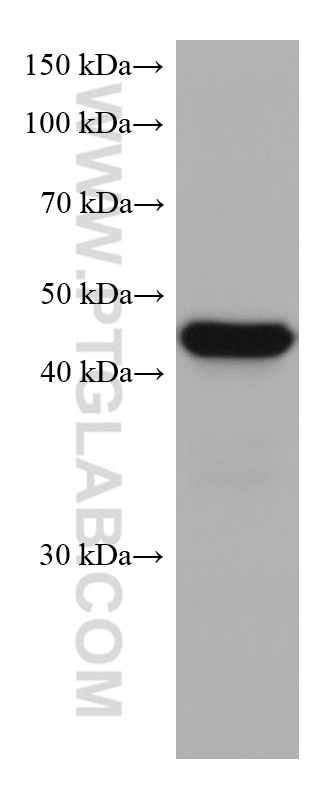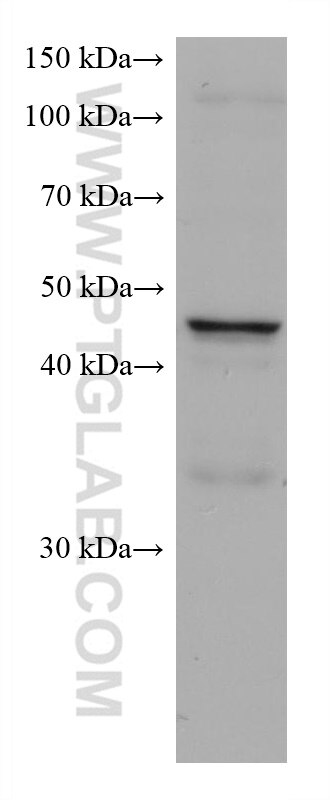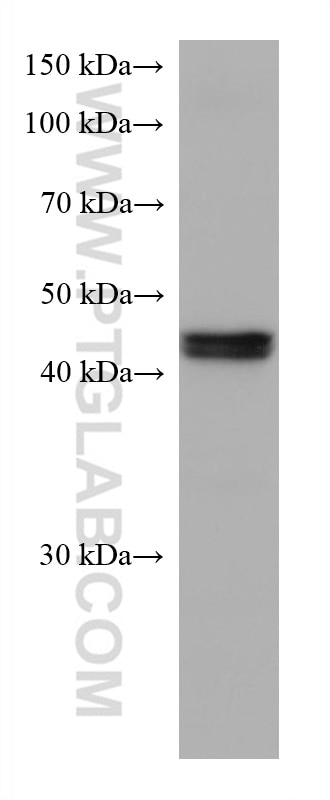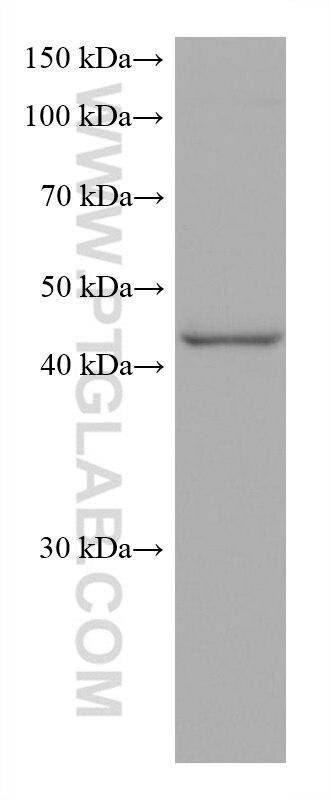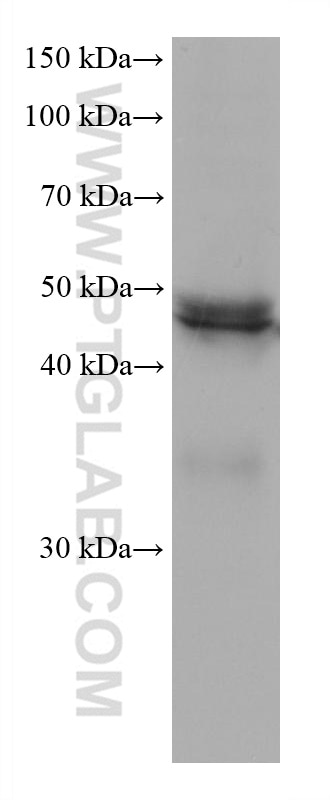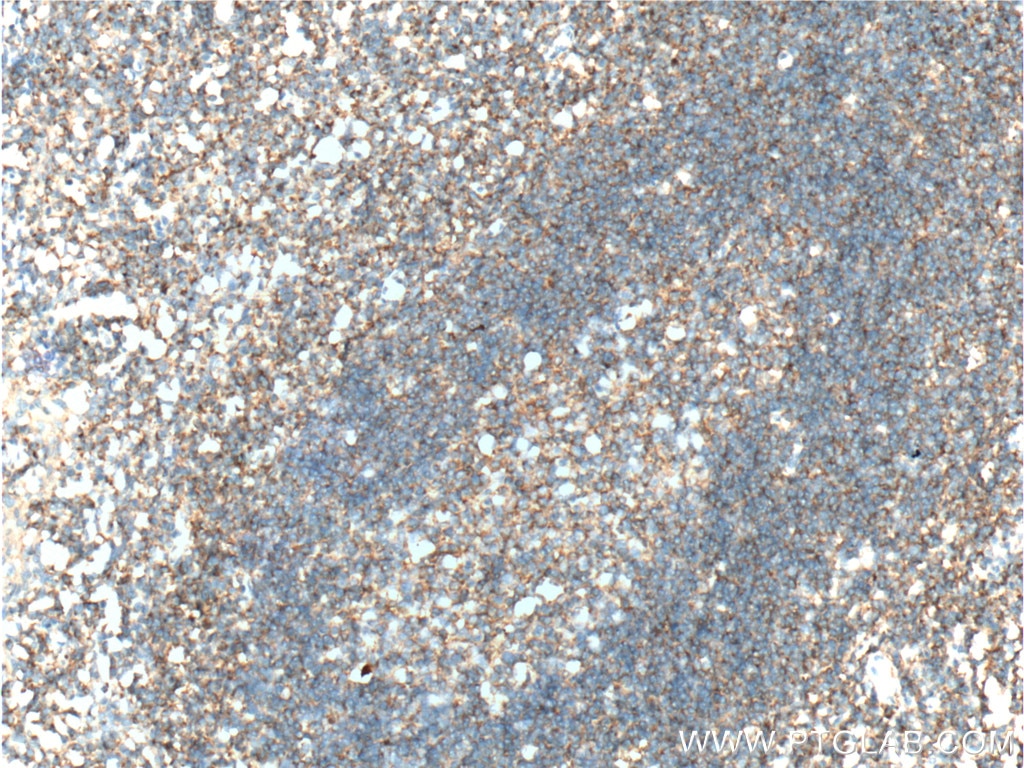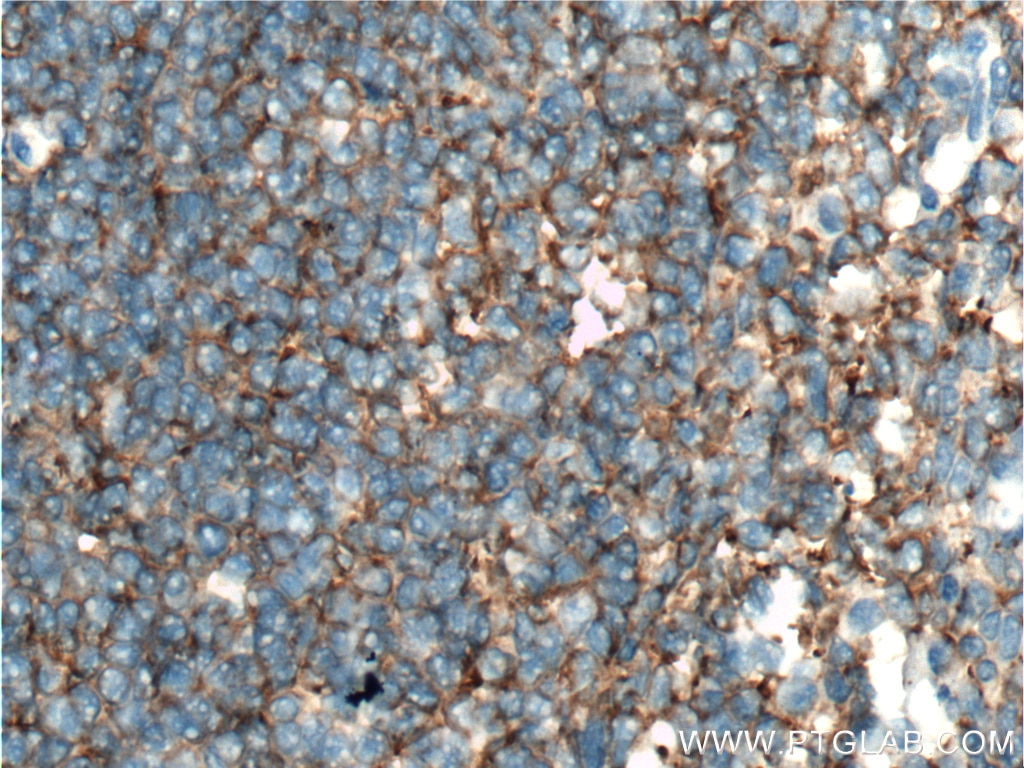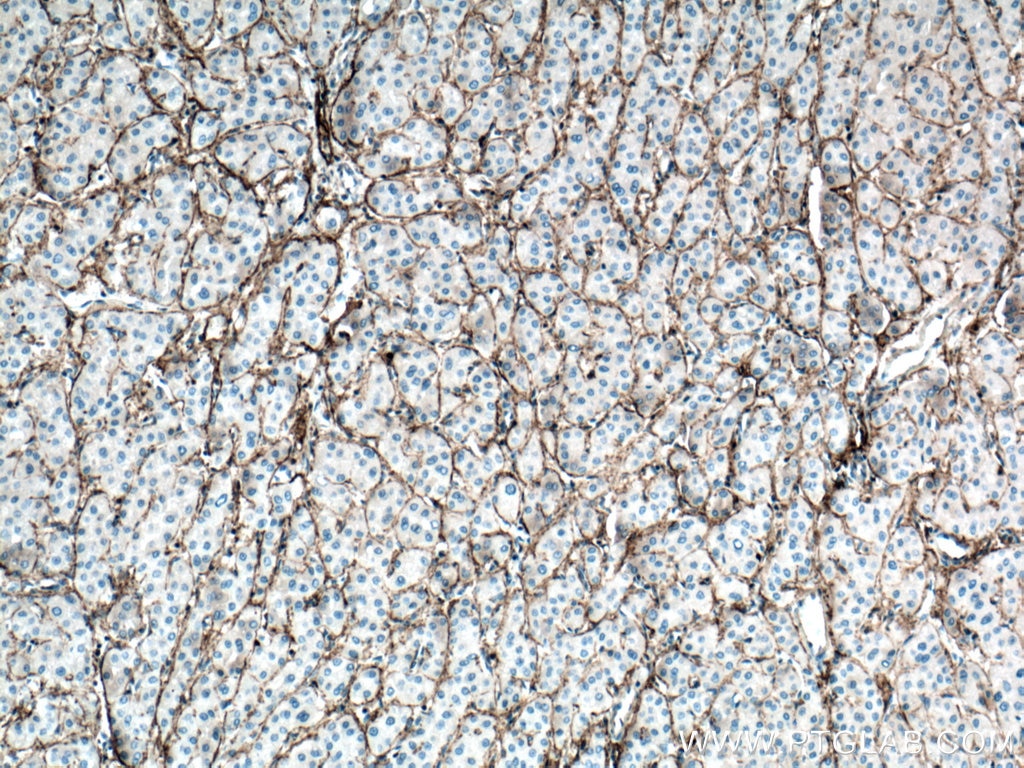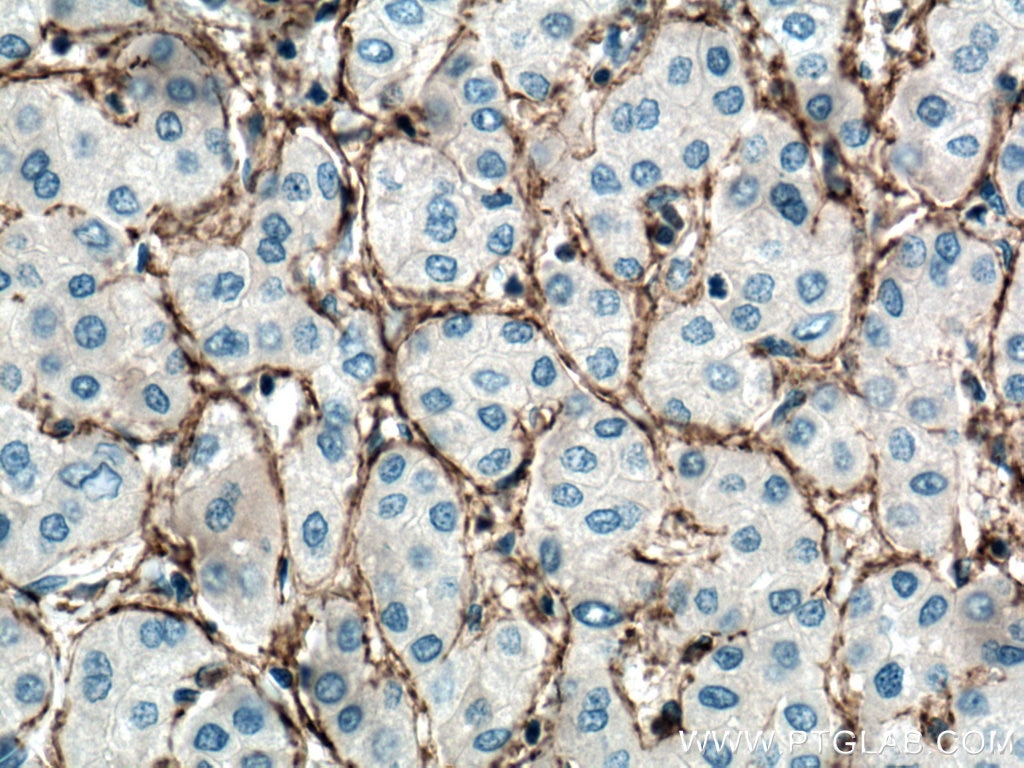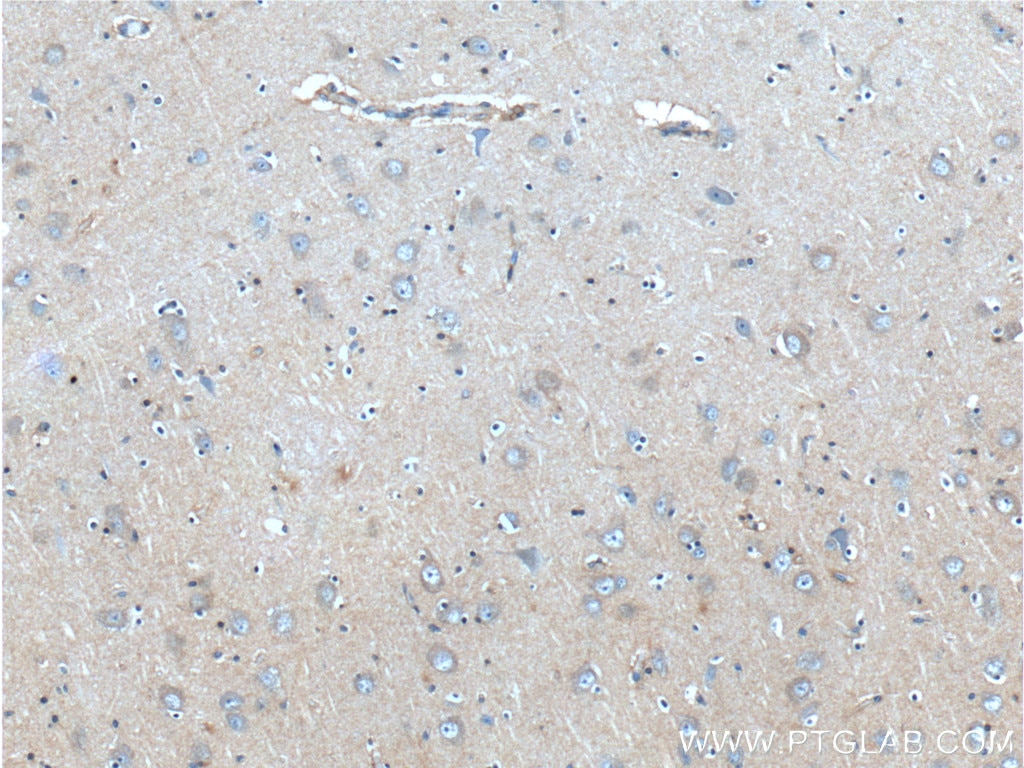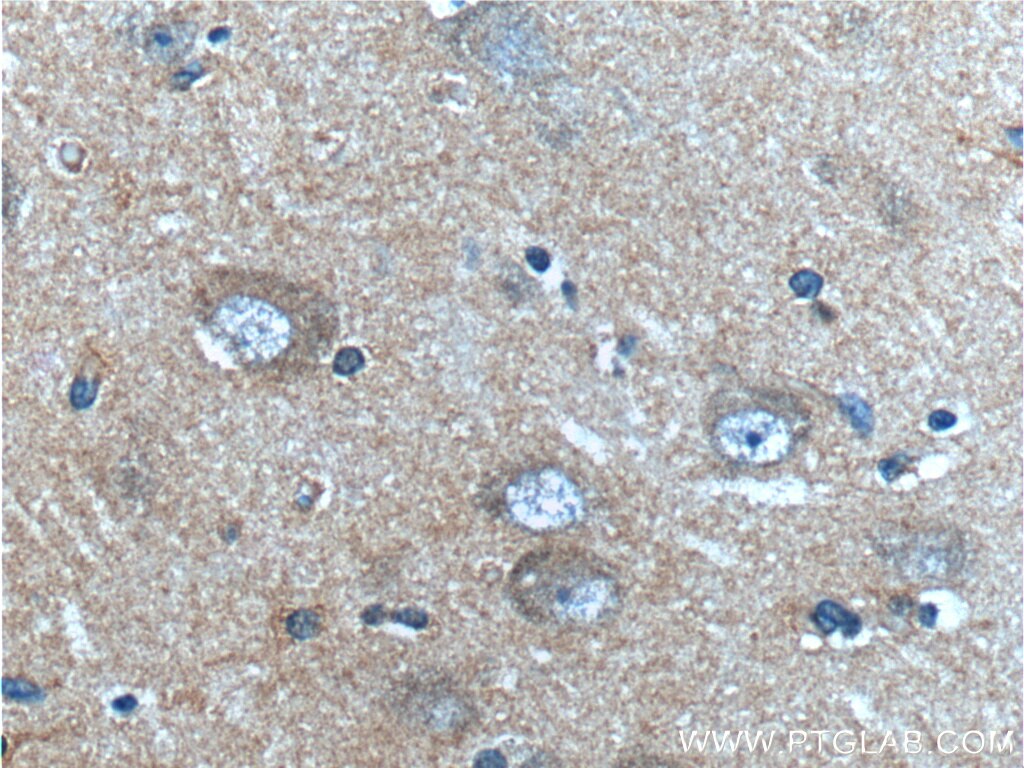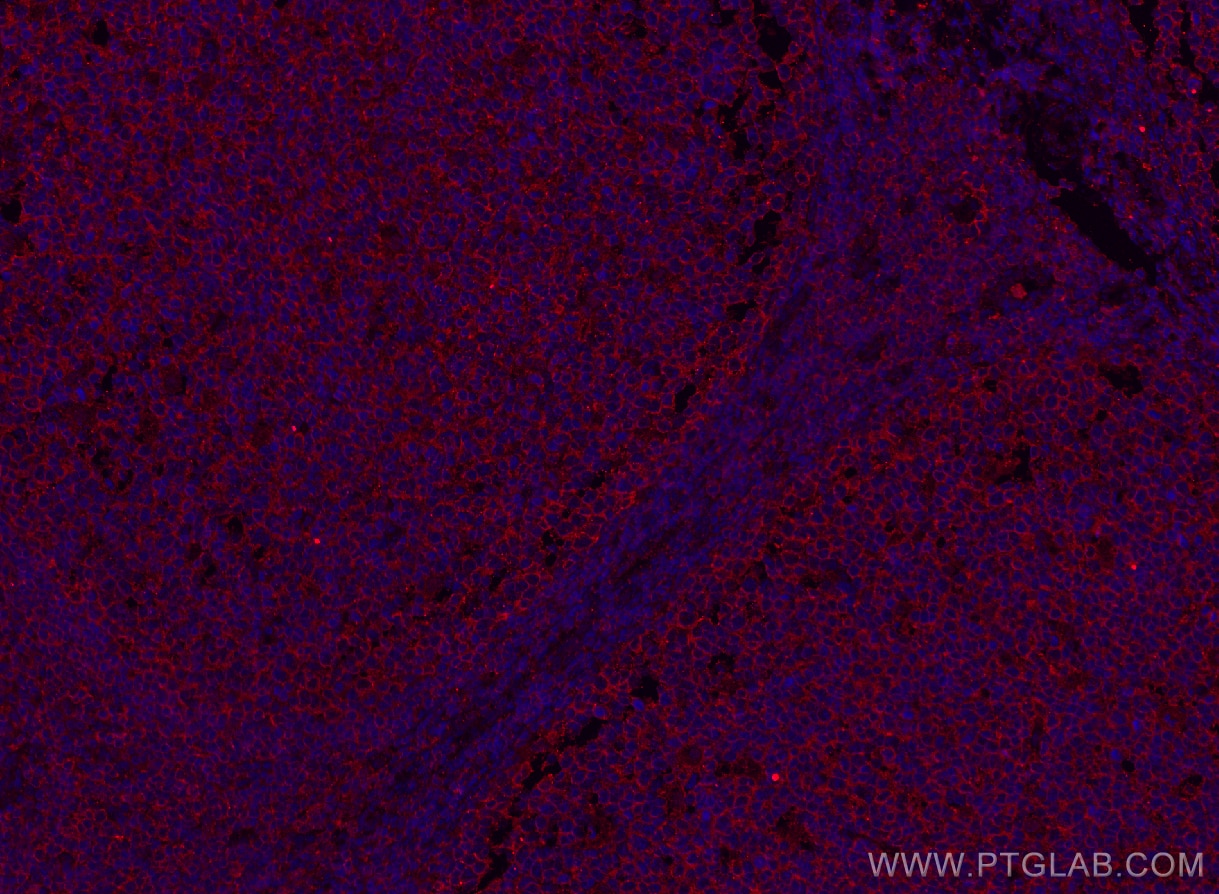- Phare
- Validé par KD/KO
Anticorps Monoclonal anti-CXCR3B-specific
CXCR3B-specific Monoclonal Antibody for WB, IHC, IF-P, ELISA
Hôte / Isotype
Mouse / IgG2b
Réactivité testée
Humain et plus (1)
Applications
WB, IHC, IF-P, ELISA
Conjugaison
Non conjugué
CloneNo.
1B2D6
N° de cat : 60065-1-Ig
Synonymes
Galerie de données de validation
Applications testées
| Résultats positifs en WB | cellules MOLT-4, cellules HT-29, cellules Jurkat, cellules K-562, cellules U-937 |
| Résultats positifs en IHC | tissu d'amygdalite humain, tissu cérébral humain, tissu de cancer du foie humain il est suggéré de démasquer l'antigène avec un tampon de TE buffer pH 9.0; (*) À défaut, 'le démasquage de l'antigène peut être 'effectué avec un tampon citrate pH 6,0. |
| Résultats positifs en IF-P | tissu d'amygdalite humain, |
Dilution recommandée
| Application | Dilution |
|---|---|
| Western Blot (WB) | WB : 1:1000-1:6000 |
| Immunohistochimie (IHC) | IHC : 1:50-1:500 |
| Immunofluorescence (IF)-P | IF-P : 1:200-1:800 |
| It is recommended that this reagent should be titrated in each testing system to obtain optimal results. | |
| Sample-dependent, check data in validation data gallery | |
Applications publiées
| KD/KO | See 2 publications below |
| WB | See 7 publications below |
| IHC | See 4 publications below |
| IF | See 5 publications below |
| FC | See 3 publications below |
Informations sur le produit
60065-1-Ig cible CXCR3B-specific dans les applications de WB, IHC, IF-P, ELISA et montre une réactivité avec des échantillons Humain
| Réactivité | Humain |
| Réactivité citée | Humain, souris |
| Hôte / Isotype | Mouse / IgG2b |
| Clonalité | Monoclonal |
| Type | Anticorps |
| Immunogène | Peptide |
| Nom complet | chemokine (C-X-C motif) receptor 3 |
| Masse moléculaire calculée | 46 kDa |
| Poids moléculaire observé | 43 kDa |
| Numéro d’acquisition GenBank | AF469635 |
| Symbole du gène | CXCR3 |
| Identification du gène (NCBI) | 2833 |
| Conjugaison | Non conjugué |
| Forme | Liquide |
| Méthode de purification | Purification par protéine A |
| Tampon de stockage | PBS with 0.02% sodium azide and 50% glycerol |
| Conditions de stockage | Stocker à -20°C. Stable pendant un an après l'expédition. L'aliquotage n'est pas nécessaire pour le stockage à -20oC Les 20ul contiennent 0,1% de BSA. |
Informations générales
CXCR3 (C-X-C chemokine receptor type 3) is a G protein-coupled, seven-transmembrane domain chemokine receptor that is expressed on the surface of a number of cell types, including activated CD4+ and CD8+ T cells, NK and NK-T cells, plasmacytoid dendritic cells, and some B cells (PMID: 16847335). CXCR3 binds and is activated by the three IFN-gamma-inducible chemokines: CXCL9, CXCL10, and CXCL11. Binding of these ligands to CXCR3 has been implicated in regulating T-cell infiltration during inflammation and tissue injury (PMID: 17250586). Alternatively spliced transcript variants encoding different isoforms have been found for this gene. One of the isoforms, CXCR3B, mediates the angiostatic activity of CXCR3 ligands and also acts as functional receptor for CXCL4 (PMID:12782716). This monoclonal antibody is specific to CXCR3B.
Protocole
| Product Specific Protocols | |
|---|---|
| WB protocol for CXCR3B-specific antibody 60065-1-Ig | Download protocol |
| IHC protocol for CXCR3B-specific antibody 60065-1-Ig | Download protocol |
| IF protocol for CXCR3B-specific antibody 60065-1-Ig | Download protocol |
| Standard Protocols | |
|---|---|
| Click here to view our Standard Protocols |
Publications
| Species | Application | Title |
|---|---|---|
Arterioscler Thromb Vasc Biol Pericyte regulation of vascular remodeling through the CXC receptor 3.
| ||
Int J Obes (Lond) Upregulation of angiostatic chemokines IP-10/CXCL10 and I-TAC/CXCL11 in human obesity and their implication for adipose tissue angiogenesis. | ||
Mol Cancer Altered CXCR3 isoform expression regulates prostate cancer cell migration and invasion. | ||
Cell Commun Signal Expression of E-cadherin and specific CXCR3 isoforms impact each other in prostate cancer. | ||
J Biol Chem A novel CXCR3-B chemokine receptor-induced growth-inhibitory signal in cancer cells is mediated through the regulation of Bach-1 protein and Nrf2 protein nuclear translocation.
| ||
Food Funct Genistein suppresses allergic contact dermatitis through regulating the MAP2K2/ERK pathway. |
